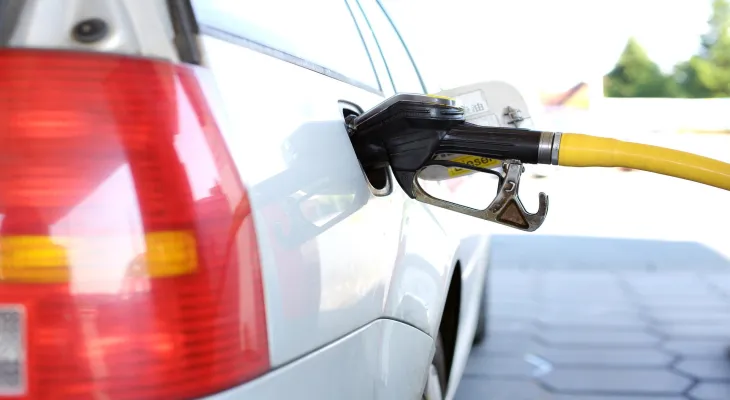Search here
Newspaper
Search here

Arab Canada News
News

Published: March 4, 2022
The Russian invasion of Ukraine pushed crude oil prices to their highest levels in several years.
The price to fill a gas tank has never been higher in Canada, and experts say there is no good reason to expect calm anytime soon.
The retail price per liter of gasoline has reached record levels in many Canadian markets this week, with prices below $1.50 per liter becoming hard to find even in oil-rich Alberta. Meanwhile, some drivers in British Columbia and Newfoundland and Labrador expect the figure to exceed $2 per liter for the first time.
Dan McTeague, head of (Affordable Energy), says the average price per liter of gasoline in Canada's largest market, the Greater Toronto Area, hit $1.67 per liter on Wednesday, the highest level ever. More increases are expected in the future.
He said in an interview, "It is an inevitable response to the threat of tightening pressure on global oil supplies due to sanctions imposed on Putin's regime."
Meanwhile, Russia's shocking move to invade neighboring Ukraine has thrown markets worldwide into chaos, with the energy market being the most affected, as the country is one of the largest producers of oil and gas globally.
Europe is a major buyer of Russian oil, which is a big reason why the sanctions imposed on the country, so far, exclude energy products. But Vijay Muralidaran, chief advisor at Caliber Energy Analytics, says the market fears that five million barrels per day may soon be unavailable.
He said in an interview, "The war has injected fear into the market." While many factors affect the price of gasoline, crude oil price is the biggest, so concern that Russian crude may suddenly become unavailable drives crude oil buyers to look elsewhere to secure reliable supplies—even if that costs them more.
Muralidaran added, "That scares you as a buyer. Even if it doesn't happen, there is an abnormal situation, so you have to make an offer to ensure your supply is available."
Russia is the primary source for about a quarter of the crude oil Europe consumes daily, but recently, some European crude oil buyers have shied away from Russian crude fearing that if sanctions on Russian energy are applied, the purchased oil may become unusable.
On the other hand, Canada has not imported any Russian crude oil directly since 2019, but that did not stop the federal government from taking an important measure this week to ban all such imports from now on. Meanwhile, the United States imports hundreds of thousands of barrels daily of Russian crude, some of which may find its way back to Canada in refined product form as the two countries are highly integrated.
This is why the conflict in the distant world is causing oil prices to rise in North America as well, as they are all part of a tense global market.
The North American oil benchmark known as West Texas Intermediate reached its highest level in eight years at $116 per barrel on Thursday, and the blend of oil coming from Canadian oil sands known as Western Canada Select was rising almost as much, exceeding $100 per barrel at one point on Thursday.
Muralidaran says this $100 figure is a "mind-boggling" number, one of the factors that added between 15 and 22 cents per liter to the wholesale cost of gasoline since the conflict began—this before it reaches the retail level.
He said, "Refineries are already scrambling to produce gasoline and diesel."
McTeague says Canada's reliance on U.S. refineries is again a key factor why Canadian drivers are paying more. "We price all our fuel [in U.S. dollars] ... and that makes the bad situation worse, which is why we are looking at at least five to six cents per liter increase," in addition to what we already have seen.
Besides the increased demand for oil that has pushed retail prices up, the federal carbon tax is set to increase on April 1, a development that will add more cents to the price of every liter at the pump.
Worse for drivers is that oil prices are unlikely to trend down even if an unlikely quick resolution to the Ukraine situation occurs. That is because crude oil prices today will be delivered next month, in April.
Muralidaran said if Russian oil stops flowing, Canada, the United States, and even OPEC countries simply will not have the capacity to ramp up production quickly. He said, "It will take some time, and it won't happen overnight."
This is bad news for drivers who are still trying to cope with prices where they are now. Lorenzo Duran, who was filling up at $1.70 per liter in Toronto on Thursday, said he is now planning his trips more carefully, trying to squeeze as much as possible out of each tank.
Another driver, Darian Nielsen, says she has been using public transit a lot lately to make up for the crazy prices.
Trip planning, walking more, and using public transit options may provide some short-term relief to drivers, but experts ultimately expect high prices to continue, likely into the busy summer driving season.
Edited by: Dima Abu Khair
Comments